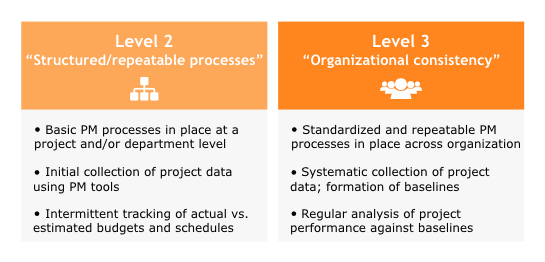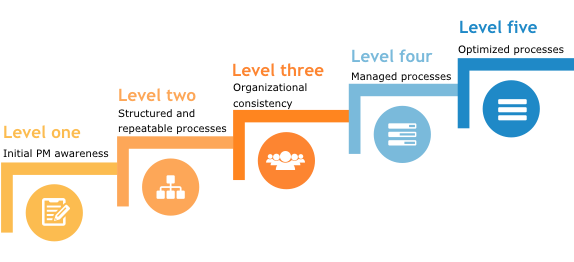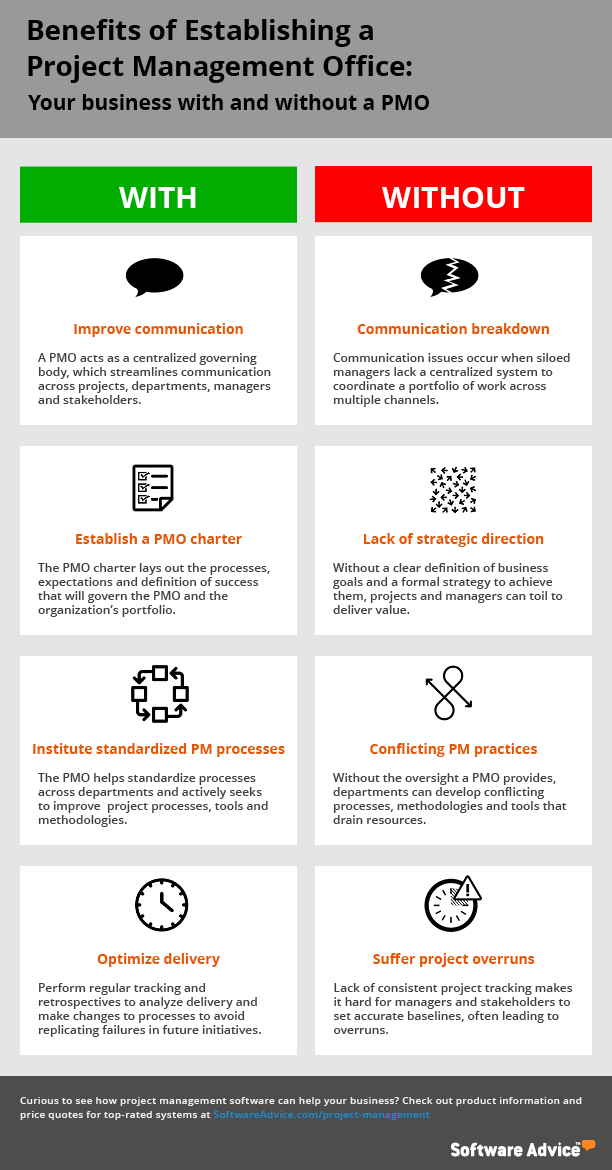Does Your SMB Need A Project Management Office?
According to research by PM Solutions, 61 percent of small businesses have an established project management office (PMO)—a business unit dedicated to providing support for project managers and governance over project management (PM) processes.
This percentage only increases as size of business scales, with PMOs reported in nearly 90 percent of midsize and enterprise organizations. Clearly, PMOs play an integral role in achieving an organization’s goals, regardless of business size.
What is impacted by business size and correlating PPM maturity is the type of PMO found in a small or midsize business (SMB) compared with those found in enterprise firms. Understanding these variances is critical if SMBs want their PMO to succeed.
According to Mbula Schoen, senior research analyst at research and advisory firm Gartner:
“The PPM maturity of an organization plays a significant role in the success of a PMO. A PMO with ambitious goals for improvement in a low maturity organization will often fail to reach those goals.”
Source: Four Types of PMOs That Deliver Value (the full report is available to Gartner clients).
To better understand what distinguishes an SMB PMO from the enterprise PMOs (EPMO) referenced in Schoen’s report, we interviewed Kurt Schmidt, current digital strategy director and former director of project management at The Nerdery.
With his insights, we’ve created the following guide (and quiz!) to help SMBs decide if they need a PMO, so they can invest their time and resources in the right tools and have the best chance for success.
Here’s what we’ll cover:
(Click on a link below to jump to that section.)
When Is It Time for an SMB to Establish a PMO?
[How Can an SMB Benefit From Establishing a PMO?
](#benefit)What Distinguishes SMB PMOs From EPMOs?
Conclusions and Next Steps: Take our Quiz
When Is It Time for an SMB to Establish a PMO?
The simple answer to this question is: When they are ready to move up from a level two PPM maturity to a level three. The PMO can act as the vehicle for this change.
Breakdown of PPM Maturity Levels 2 and 3

PPM Maturity Levels

Of course, there isn’t a timer that goes off alerting an organization that it’s time to set up a PMO and advance to the next stage of PPM maturity. And in fact, PMOs often start to form organically before it is retroactively decided to establish governance.
For example, Schmidt says a common scenario is for a pseudo PMO to form around the IT department. As a company grows, the IT department will begin receiving requests to manage initiatives from other departments, such as marketing or accounting.
Cross-department requests for resources are sustainable for a short time. However, in the long-term, a centralized system will become necessary for standardizing processes and optimizing project outcomes.

“I haven’t seen a lot of places deliberately say ‘we need a PMO’ until it’s already mildly formed … Especially in a company that’s experiencing growth, the business is moving faster than the updating of internal processes. At some point, They look in the rear view mirror and say ‘Oh, there’s a better way to do this.’”
Kurt Schmidt, digital strategy director at The Nerdery
SMBs should consider the following before deciding whether to formally establish a PMO:
Number of project managers
Number and complexity of projects within portfolio
Expected growth (for the team and/or organization)
Project requests coming from multiple departments
Individually, these factors may not indicate a need for a PMO, but in combination they likely call for a centralized governance to oversee project processes. (See our “Next Steps” at the end for an interactive quiz to assess your organization’s readiness.)
How Can an SMB Benefit From Establishing a PMO?
There are many ways a PMO can benefit your organization. The following are a few examples of how SMB PMOs deliver value:

What Distinguishes SMB PMOs from EPMOs?
There are several characteristics that separate an SMB PMO from those found in enterprise organizations. We’re going to discuss three major distinctions:
Flexibility
PMO roles and responsibilities
Focus on delivery versus performance
Flexibility: Think of a PMO as a ship—the larger the ship, the more difficult to course correct. As such, simply due to the size of the organization, SMBs can be more flexible and adaptive with their PMO. They can vet methodologies and tools more easily and choose the process that makes the most sense for the scope of each project in their portfolio.
Schmidt cautions that as an organization grows, it’s easy for leaders to find a method that works well and decide to stick with it because it’s proven successful in the past. However, it’s important for PMOs of all size to perform retrospectives to make sure they are providing best-in-class service to the organization.
PMO roles and responsibilities: In SMB PMOs, it’s likely that senior project managers will have a split role: Oversee projects while also contributing to process governance. As the organization scales, however, Schmidt says it becomes more important to make process governance the sole focus of one individual, versus having someone contribute to it when they have time.
This separation of “people management” and “project management” allows the PMO to support project managers and projects equally, which according to PM Solution’s State of the PMO report, is a marker of high performing organizations, i.e., those that deliver more value.

“The larger your PMO gets, you need to make sure that specifically, the project manager is being supported and that the projects are being supported. Projects don’t respond the same way people do. So making sure you’re taking care of the mentorship and growth of that project manager will make your projects that much better.”
Kurt Schmidt, digital strategy director at The Nerdery
Focus on delivery versus performance: Perhaps the most important distinction between PMOs in SMBs compared to enterprise organizations is that SMBs are more focused on delivery, i.e., “are we getting it done,” and enterprises are more concerned with performance, i.e., “how are we getting it done.”
As the SMB grows and advances in PPM maturity, there becomes a greater emphasis on delivering quality along with timeline, cost and scope. In this way, the PMO can continually help to optimize performance.
While it’s certainly not a rule that SMBs can’t be concerned with quality in the early stages, this would be a good example of how smaller organizations should heed Gartner analyst Schoen’s warning and tailor their PMO’s strategy to align with the appropriate level of PPM maturity. Doing so can help them set attainable goals and have the best chance for success.
Conclusions and Next Steps
Deciding whether to formally establish a PMO is a big step. It requires a hefty investment of time and resources. However, the payoff can be significant: As PM Solutions reports, on average across business size, organizations with a PMO have a 27 percent decrease in failed projects and experience $101K cost savings per project.
Wondering if it’s time for your SMB to establish a PMO? Take our quiz to find out. Choose the answer in the column on the right that best describes your organization:
On their own, one or two of these criteria may not justify the investment associated with creating a PMO. However, if you answered “Yes” to three or more of these questions you’re likely at a stage where you can benefit from having a PMO to better support your project managers and govern PM processes. If so, here are a couple next steps you can take:
If you’re ready to compare PPM tools: Head over to our interactive PM buyer’s guide to compare PPM products. Filter products by number of reviews or user rating, or other criteria such as price and deployment offering. See how your peers have rated each solution for qualities such as customer service and ease-of-use.
If you’d like more information about PMOs and portfolio management: Check out our recent articles on the benefits of and best practices for implementing portfolio management. Or, email me at eileen@softwareadvice.com. I’m available to answer any questions you might have about the PMO tools available for SMBs.